Make Noise MultiMod Creates A Flurry of Modulation from a Single Source
Make Noise MultiMod creates a swarm of eight related modulation signals from a single source. The first Eurorack module of the New Universal Synthesizer System is now available to order!
Make Noise MultiMod
Make Noise first hinted at a new module a couple of weeks ago. And now we know what it is! The first module of the manufacturer’s forthcoming „New Universal Synthesizer System“, MultiMod creates up to eight mutually related, but different variations of a single modulation signal. Intriguing!
MultiMod starts by making eight copies of the input signal. In theory, you could use the module as a 24-bit digital multiple, although that would be lots of wasted potential. The Time, Phase, and Spread parameters, all of which are of course CV-controllable, are where the fun begins.
Time sets the global write/read speed, effectively controlling the length of the fragments of the input signal the module works with. Shorter times make the module more responsive to the input, while longer times allow for greater modulation depth for the Phase and Spread parameters.
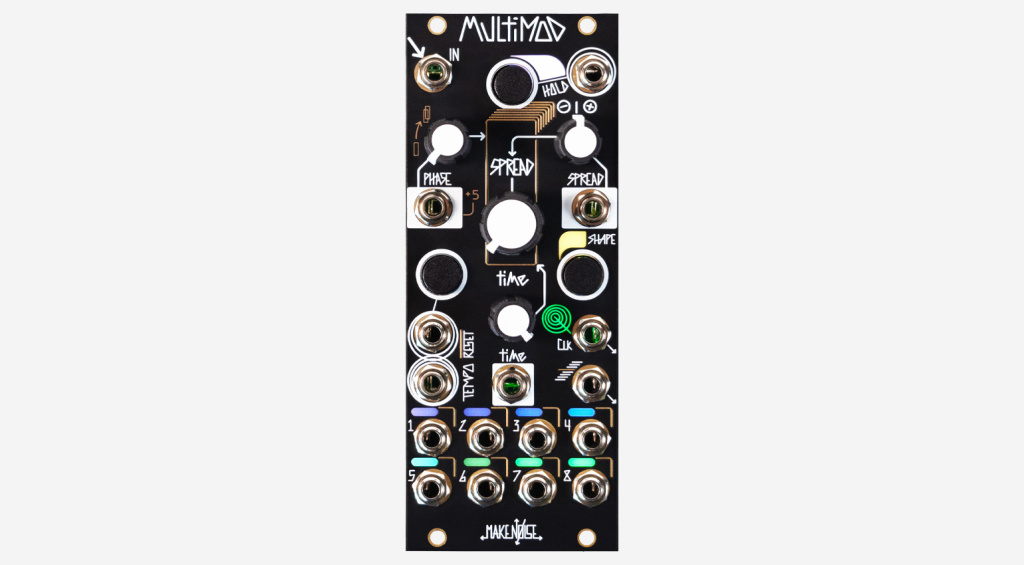
Phase applies varying amounts of phase-shifting to the eight output signals, with each channel getting more out of phase from the original. By turning the knob or applying CV, you can manipulate the phase spacing of the eight outputs.
Spread can be thought of as a vari-speed parameter that multiplies or divides the speed of the modulation depending on the output. The middle outputs are closest to the input signal, while the signals get progressively slower towards output 1 and faster towards output 8. The module also has a Tempo input for syncing this to an external clock.
Moreover, MultiMod offers a Hold button and corresponding gate input that lets you “freeze” and loop the captured content.
If you don’t patch anything into the input, MultiMod becomes a modulation source of its own. The internal LFO provides a modulation signal that is copied and manipulated in the same way.
Price and Availability
You can now order Make Noise MultiMod from Thomann* for $373 / £363 / €429. The module should be available within a week or so.
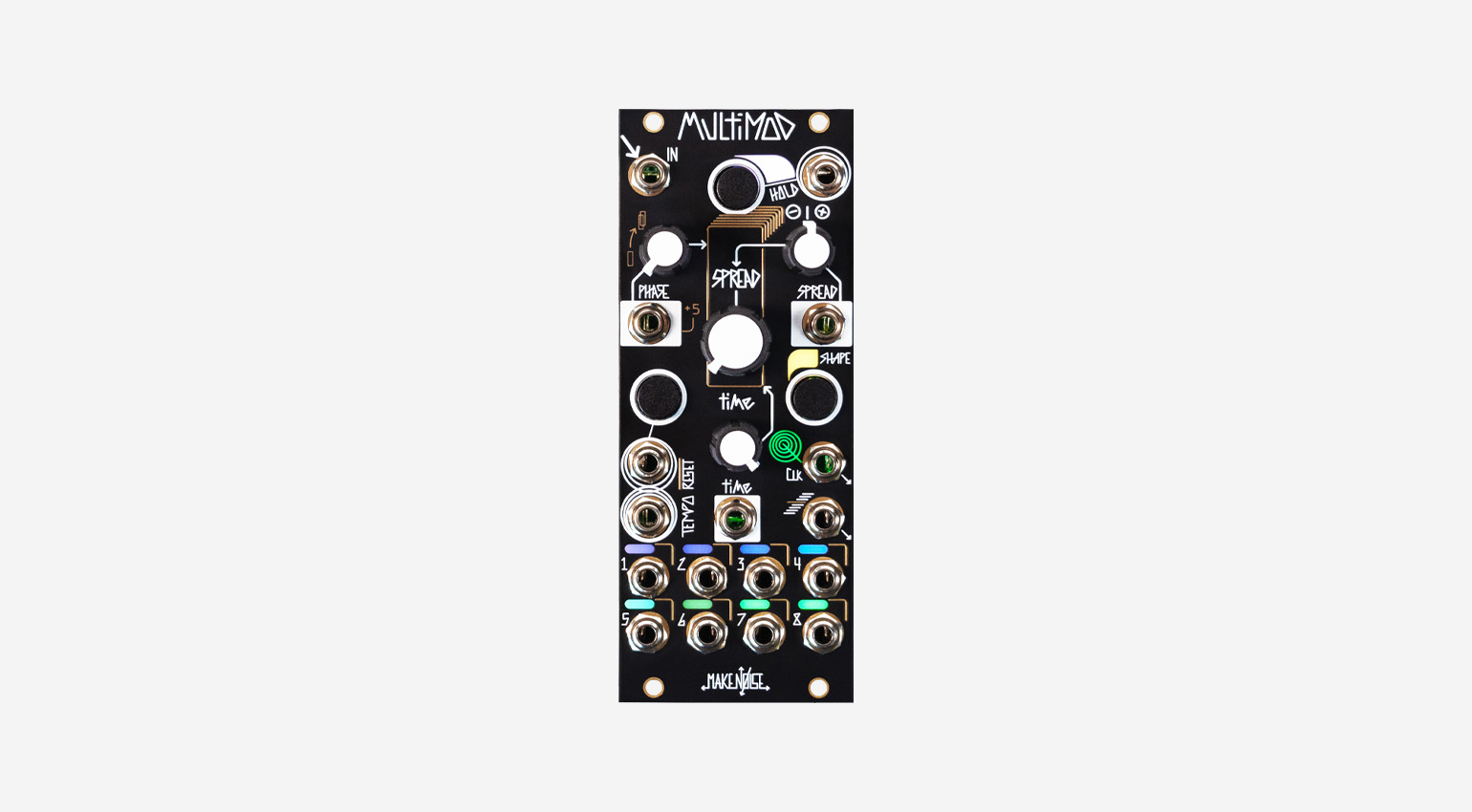
More Information
*This post contains affiliate links and/or widgets. When you buy a product via our affiliate partner, we receive a small commission that helps support what we do. Don’t worry, you pay the same price. Thanks for your support!
9 responses to “Make Noise MultiMod Creates A Flurry of Modulation from a Single Source”

 3,7 / 5,0 |
3,7 / 5,0 | 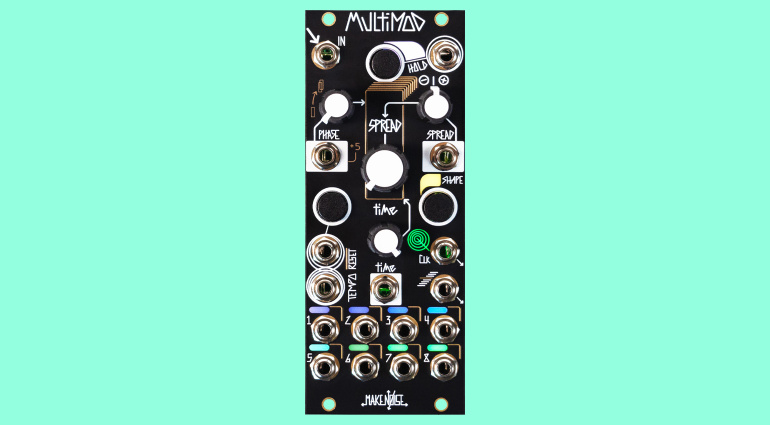


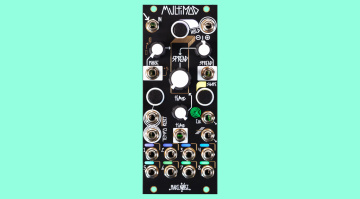

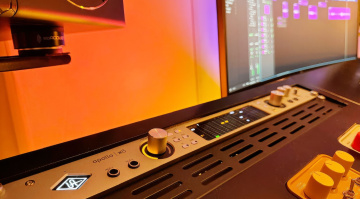
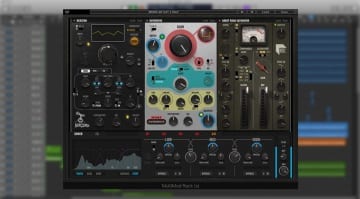


Totally GAME CHANGING! It’s can be a very lofi delay even, just UNBELIEVABLE! And it’s just STUNNINGLY BEAUTIFUL.
Tony Rolando truelly is a GOD. Take my money 💰
Totally agree, this is awesome. Aesthetically stunning.
It’s great to see people like Make Noise producing original designs like Maths, Function, all the LPGs etc.
Visiting their page is like an inspirational movie – just awesome
Great to see people excited about modular but are we not losing the plot slightly?
Function and Maths are both clones of Serge Tcherepnin’s famous DUSG module.
Likewise the LPGs are all based on ancient Buchla designs.
Glad you are all inspired either way – party on dudes 🥳
I don’t think you know what clone means.
Rampant consumerism is strong and alive in the Eurorack scene 😂
Maths is NOT A CLONE.
Although I have been ridiculed all over the internet for saying this, the addition of a basic logic utility and cool paint job to the otherwise identical module takes it from the clone category into unprecedented genius and totally different from anything Behringer would do.
Make Noise 4eva
That is some Teenage Engineering level fanboyism right there 🤣
How Omnipresent!
Make Noise are fairly unique in the sense they are quite open that many of their designs are highly influenced by, if not almost direct copies, of famous circuits of yesteryear.
However the fan boy cult members will deny it to their dying breath.. very bizarre!
On another note I genuinely have never heard anyone refer to any Make Noise module as having a ‘cool paint job’ 😂
🤥
A creative powerhouse for modulating modulations in a tidy footprint. This is what modular is all about! Seems like an auto-include for most systems.
Believe it or not there are a small cadre of people who use modular to produce actual music, as opposed to an incoherent mess of bleeps and clicks from inane modulation and dc offsets.
For those interested in the latter it surely will be a big seller. For serious musicians, not so much.
You are currently viewing a placeholder content from Facebook. To access the actual content, click the button below. Please note that doing so will share data with third-party providers.
More InformationYou are currently viewing a placeholder content from Instagram. To access the actual content, click the button below. Please note that doing so will share data with third-party providers.
More InformationYou are currently viewing a placeholder content from X. To access the actual content, click the button below. Please note that doing so will share data with third-party providers.
More Information